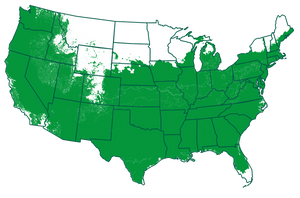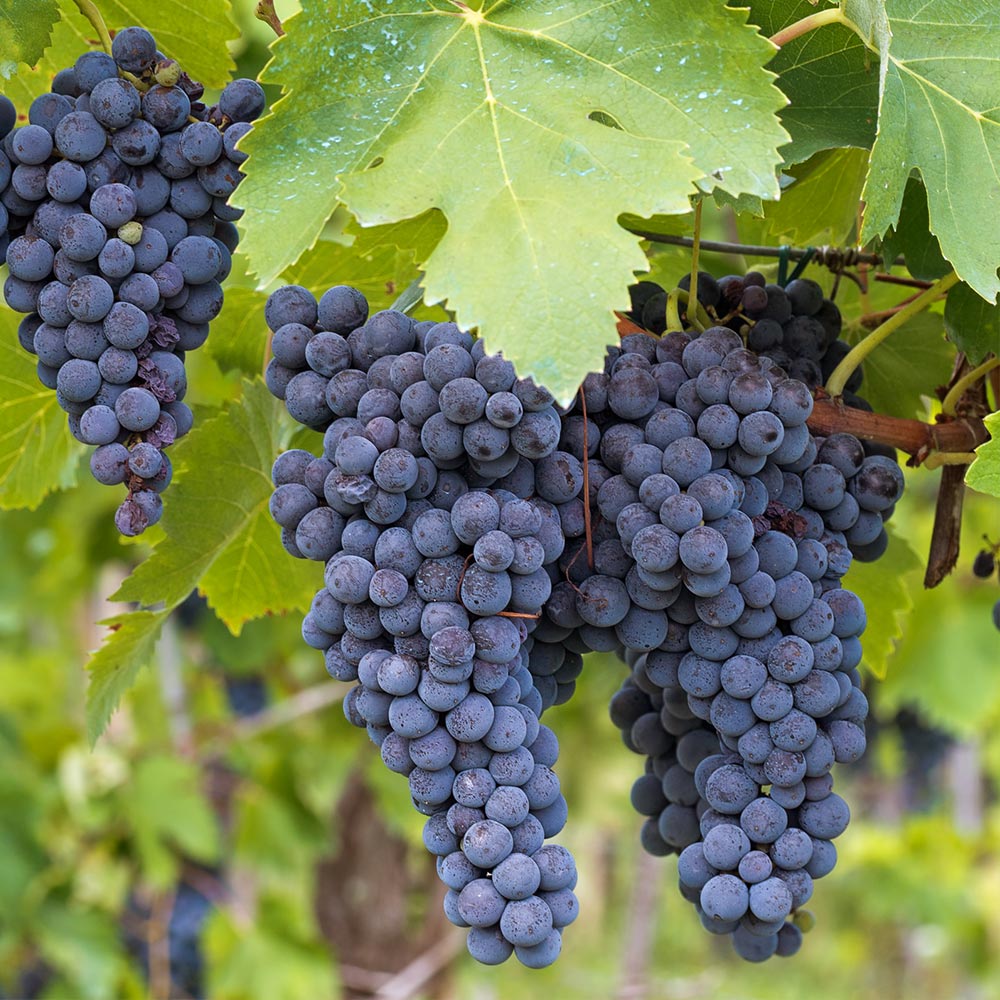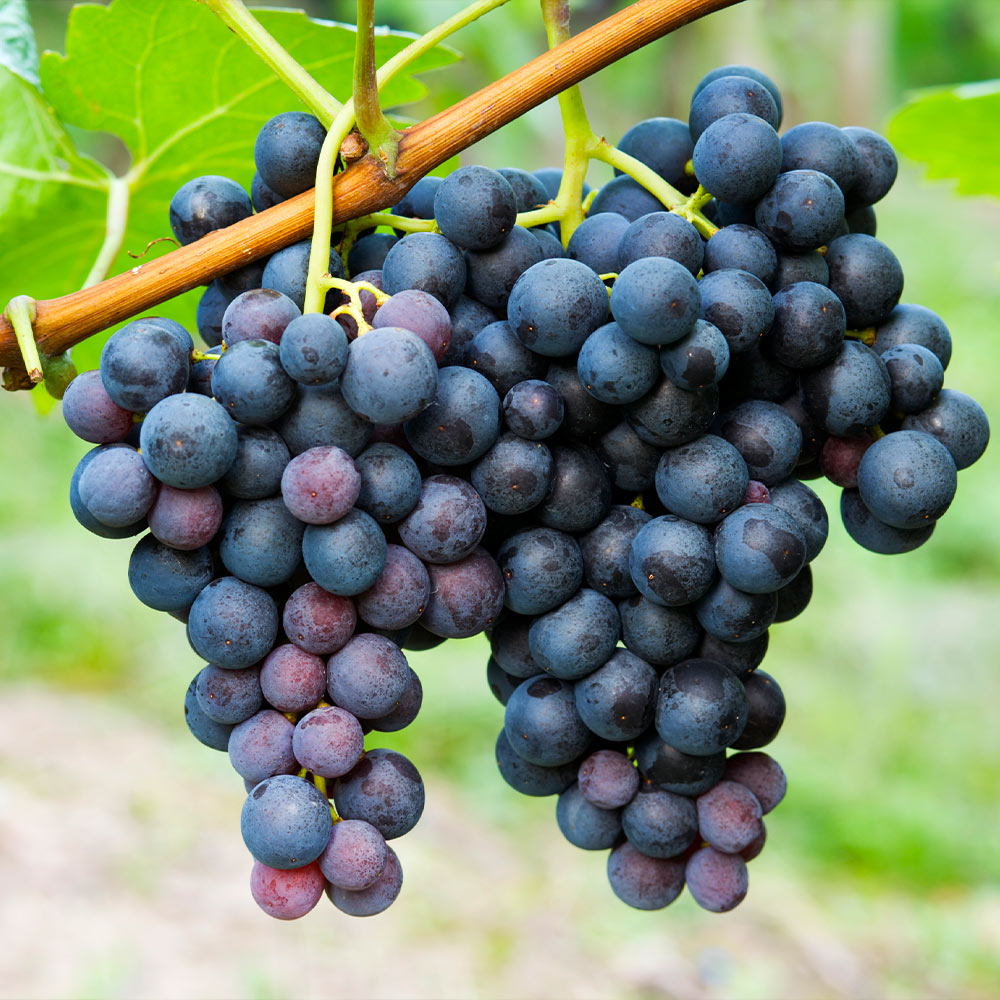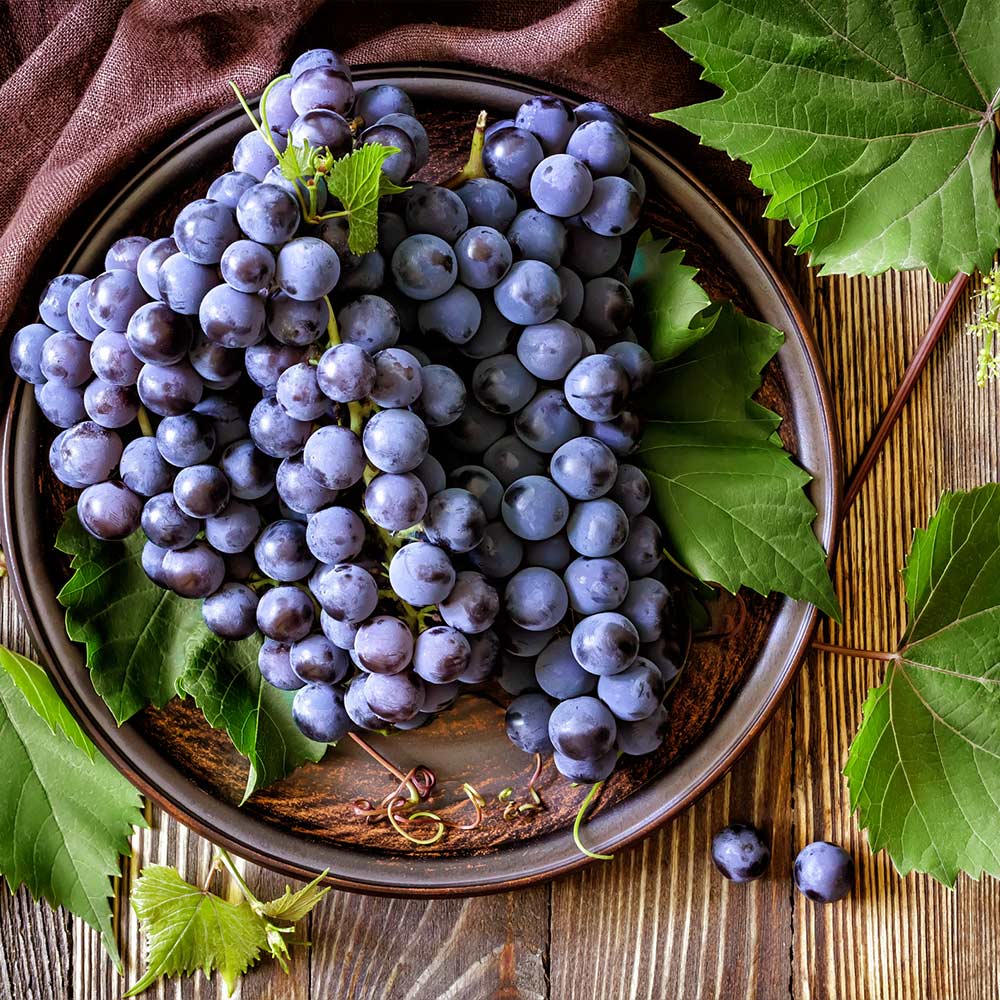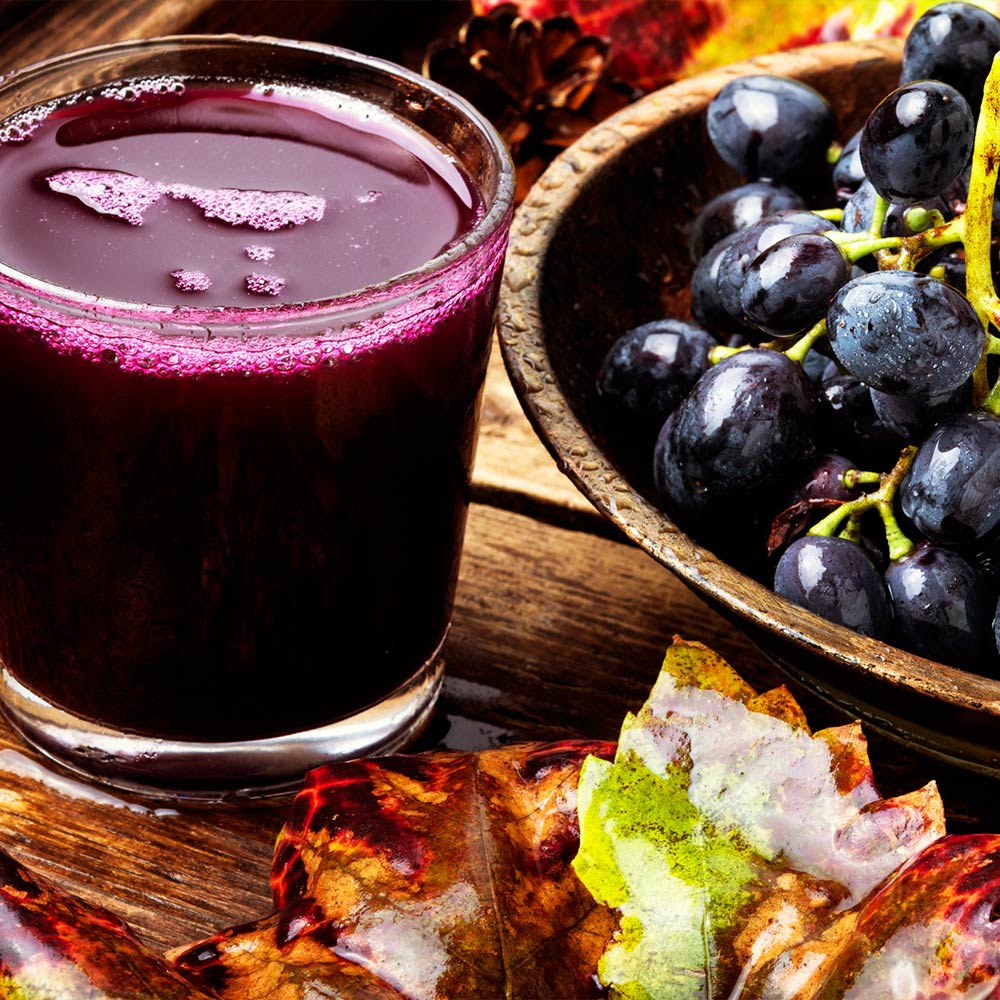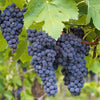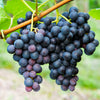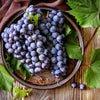* Images shown are of mature plants

Have questions? Talk with our Plant Experts (800) 973-8959
Save 25% on $200+ with code FALL25.
Questions? Call our plant experts: (800) 973-8959
America's Favorite Grape
The Concord is the number one grape for sweet, tangy juice and nutritious snacking.
These mid-season concords are deep purple, rich and sweet. They're good for you too! Filled with anti-oxidants, they're a healthy snack you'll be proud to eat and serve to your family. You'll receive such a large bounty, you'll have enough to make jelly or juice throughout the year. (Studies show that grape juice has many of the same health benefits as red wine without the alcohol!)
Grow Your Own. Here's How
Often difficult to find in supermarkets, you'll have your fill when you grow your own. The vigorous vines are tough and easy to prune for prolific fruit production each year.
The method is simple. Grow them in a 'T' shape along wires or a trellis. Once a year, prune hard and keep pruning. If it doesn't look like you've taken too much, prune some more- all the way back to about a three-foot central cane. Just make sure you plant it with plenty of full sun in well-drained soil and you'll be amazed at the amount of grapes you'll get.
Order Right Away
You're welcome to order online, or if you have questions, call us. We're always happy to help. Once your order is placed, we'll ship it out the next day. You'll receive a healthy plant that is ready to thrive. Because we start the growing process at our nursery, it arrives healthy with its complete root structure and will be ready to thrive.
Note: We carry both seedless and seeded Concord Grapes, and you may receive either one.
Pollination Info
Concord Grape Pollination
Concord Grapes are self-fertile. You will get fruit with only one plant. However, adding an additional Concord Grape will drastically increase the size of your crop.
Planting & Care
Choosing a location: Grapes with their ability to grow in many places around the world, are a great addition to any garden. Your grapes will love a sunny place with well-draining soil. The vine will be quite satisfied with six to eight hours of sunlight. Good drainage is required to keep your plant “happy” and a soil pH between 5.0-7.0 is best. Avoid areas with soil that may be heavy with clay.
Planting Instructions:
1) Be sure to keep your grape vines moist right up to planting.
2) Dig a small hole about 6 inches wide and 4-6 inches deep. The width of the hole should allow you to spread the roots. If you are planting multiple grape vines dig your holes 6-8 feet apart. In a situation where you have a lot of clay in the soil break up the glazed areas using a shovel.
3) Stand the plant up and carefully pack the soil back into the hole around the vine.
4) Water the vine immediately after planting with 3 gallons of water
5) Grapes are essentially a vine that grow upwards along a structure so they will need a "trellis" for proper support and healthy growth. This is typically a wooden structure made of intertwined boards that allow the vines to wrap around them, providing a sturdy support system.
Do not use a single stake (similar to growing tomato plants) as this won’t provide enough support for your vines once they start growing.
Watering: Water regularly for the first year about 1 inch (1 1/2-2 gallons) a week. Directly moisten the roots but avoid spraying or misting the grapes. After the vines are a bit more established they will seldom need watering and mulch will no longer be necessary. Be watchful for leaf drop, this is a warning sign that you may be over watering.
Pollination: Most species of grape are self-fertile but a good rule of "green thumb" is to always plant in pairs. Not only will this assure you a healthy yield of fruit but it will also cover the possibility that the grapes need another separate vine to kick start the fruiting process.
Pruning: Balanced pruning maintains the vine's form, size, vigor, and next season's fruiting wood. Pruning should be done when the vines are dormant in late winter or early spring. Do not prune when vines freeze, because they are brittle and can damage easily. Leaves around the grape clusters can be removed to expose the fruit to sunlight in a short growing season. In your first growing season multiple shoots will begin to grow and the vine may become bushy. Some trim these back to just one or two shoots. Others prefer to let them grow so they may have a better selection to choose from during the following winter's pruning.
During your first dormant pruning you'll select one or two of the best canes and remove all the others. You'll need to remove all lateral canes as well. Your goal is to achieve a balanced vine of just the right amount of leaves to fully ripen the grapes. Too much shade from vigorous leaf growth produces fewer grapes and less desirable grape qualities.
Fertilizing: Young vines may not need any fertilizer for the first two to three years. If fertilizing is necessary, apply a small amount of 10-10-10 fertilizer two to three weeks after planting, keeping it one foot away from the vine's base. Apply only when vines appear to need it and only in early spring. Excess nitrogen can cause plants to become vegetative and not flower. Too much fertilizer can also cause possible winter damage and delay the coloring and ripening of fruit. Periodic soil testing once a year is highly recommended.
Harvesting: Some species of Grapes will ripen at different times of the year than others. (Example: Concord grapes in late September, Niagara’s mid-season in August-September, and Catawba’s in late September-October). Taste is the best determining factor if it's time to harvest or not. When fruit appears, test its ripeness by picking a few grapes from different areas and tasting them. If the grapes are sweet, start picking as they ready for harvesting and eating.
- Grapes will not continue to ripen after picking so be sure not to pick them prematurely.
- Color and size are not necessarily a good indication of ripe fruit. Only pick the fruit after you’ve tasted it and are certain it is ready.
Grapes are certainly a multi-purpose fruit, being used for wine, baked goods, jams, and for eating fresh off the vine. A fantastic plant addition for any fruit lover!
Shipping Details
Estimated Shipping Time: Most orders ship immediately. As noted on the website, some items are seasonal, and may only ship in spring or fall. Once your order is shipped, you'll receive an email with a tracking number.
| Amount of Order | Shipping Charge |
|---|---|
| Less than $49 | $19.95 |
| $49 + | FREE SHIPPING! |
Product Details
| Mature Height: | 12 ft. |
| Mature Width: | 5-8 ft. |
| Sunlight: | Full Sun |
| Growth Rate: | Fast |
| Harvest Time: | September |
| Year to Bear: | Can Fruit the 1st year! |
| Botanical Name: | Vitis 'Concord' |
| Does Not Ship To: | AZ,ID,OR,WA |
| Grows Well In Zones: | 5-9 outdoors |
| Your Growing Zone: | # |
